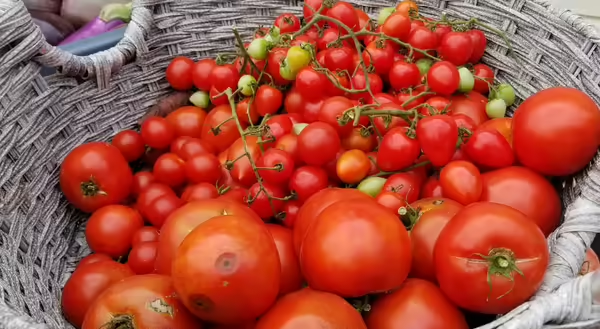
Based on our updated frost-free dates, most of the risk of spring frost has nearly passed, and it's time to start thinking about planting cold-sensitive vegetable crops. Tomatoes are perhaps one of the most popular warm-loving plants in the home vegetable garden. With their time in the garden fast approaching, many of us are already dreaming about that first fresh tomato, with its unparalleled taste and texture.
The temptation of early planning
In the quest for that first homegrown tomato, many gardeners push the envelope on planting dates, risking frost or other disastrous spring weather to get plants out in the garden as soon as practical.
Tomatoes are certainly sensitive to frost and colder temperatures as well. While they can survive outside in the cooler spring months, they really won’t thrive until nighttime temperatures remain above 45°F and daytime temperatures soar much higher. In our area, the optimal timing for outdoor tomato planting typically occurs in early to mid-May. So, don’t sweat it if you aren’t quite ready yet.
However, once those plants reach the garden, many of us are intent on getting mature fruits as quickly as possible, and there are a variety of recommendations out there on the best practices to achieve this goal. One common recommendation is to pinch off flowers early in the season, especially if the seedling you are about to plant already has some blooms.
For most of us, the removal of flowers seems counterproductive. In the past, I’ve marveled at the tiny seedlings in the greenhouse, which already have flowers forming. They seem to be superior plants since they already host a bloom. Wouldn't it make sense for earlier flowers to lead to earlier fruits?
When considering this dilemma, it helps to think about the plant processes at play. Flowering and fruit production are energy-intensive processes, which makes sense because these plant parts perpetuate the species. It's worth a lot of energy investment to the plant.
Plants are super unique in the fact that they produce their own energy in leaves via photosynthesis. A young seedling simply does not have the leaf area to produce large amounts of energy. In addition, a variety of environmental factors may limit an individual leaf’s ability to perform photosynthesis, such as temperature, moisture, and light levels, to name a few.
So, that young tomato seedling that just came from the nursery or greenhouse is actually pretty vulnerable. In general, plants are not well adapted to quick changes in the environment, which is a major reason why it’s important to harden off your plants.
Importance of hardening off
“Hardening-off” is the process of slowly transitioning plants from the ideal setting that the greenhouse or indoor growing conditions create to the harsh real-world environment the garden throws at them. The outdoor environment immediately exposes them to varying temperatures and near-constant wind stress. In addition, outdoor watering is typically less perfect than the ideal conditions we can achieve indoors, creating new stress from too little or too much moisture.
Beyond the environmental stresses I mentioned above, disease pressure can present yet another challenge. Stressed tomato plants have less ability to resist disease or outgrow the many fungal leaf infections that often plague lower branches. All in all, a young tomato seedling has a lot to deal with, and it takes energy to overcome these challenges.
Over the years, I’ve wondered if I should prune off tomato flowers early in the season. When you consider the research available, much of what I’ve read was done under greenhouse conditions, and we know the real world is different.
Balancing early harvests and higher yields
However, some of the research indicates that removing flowers early on can lead to larger fruits later and, in some cases, higher yields per plant. As with most questions like this, it all depends on so many factors that it's hard to say how this may play out in your garden.
In my opinion, if your goal is to get tomatoes as early in the growing season as possible, it may not make sense to prune off any flowers. You’ll get a ripe tomato sooner, but it may be at the expense of other energy needs. Then again, if your goal is the highest yield possible across the season, it makes sense to prune off flowers early so your young plants can focus energy on a robust root system and a large canopy of leaves to photosynthesize.
Photo Captions
Top: It's nearly time to plant tomato seedlings in pursuit of that first ripe fruit of summer. Photo by Ryan Pankau.
Main image: Nothing beats a homegrown tomato. Start planning now for your summer harvest. Photo by Ryan Pankau.